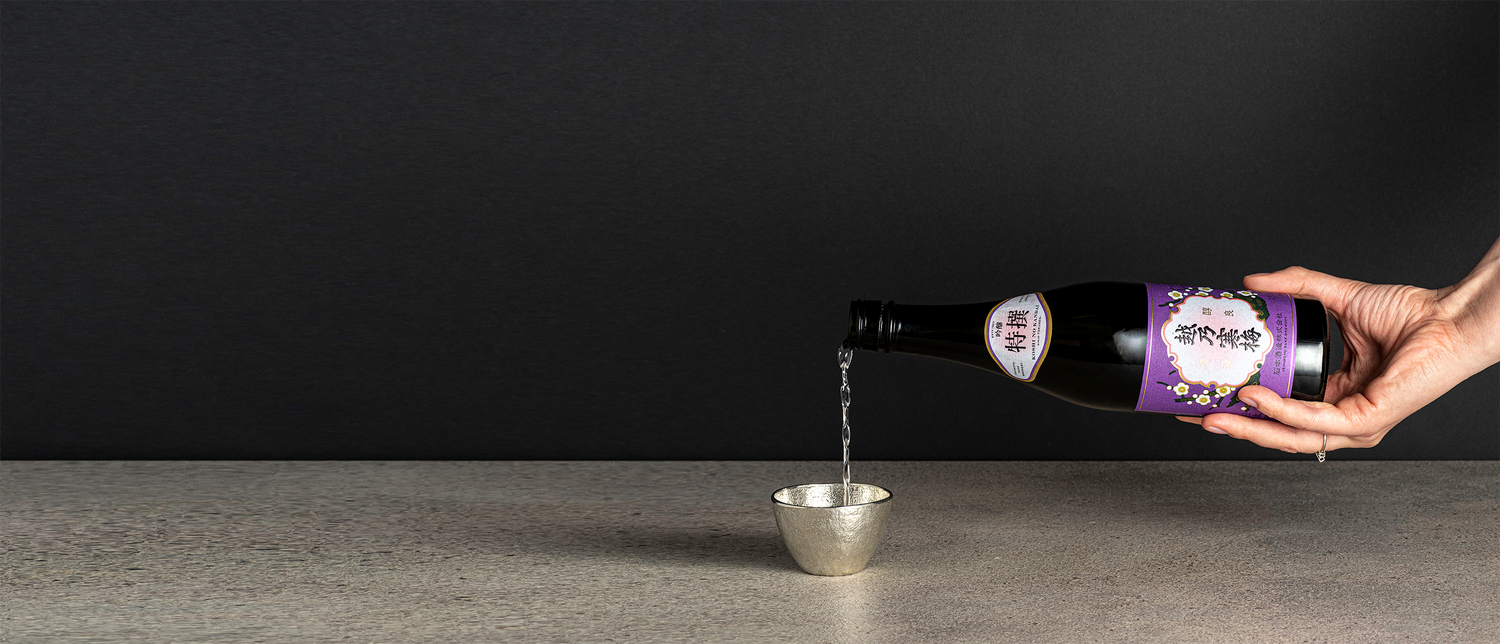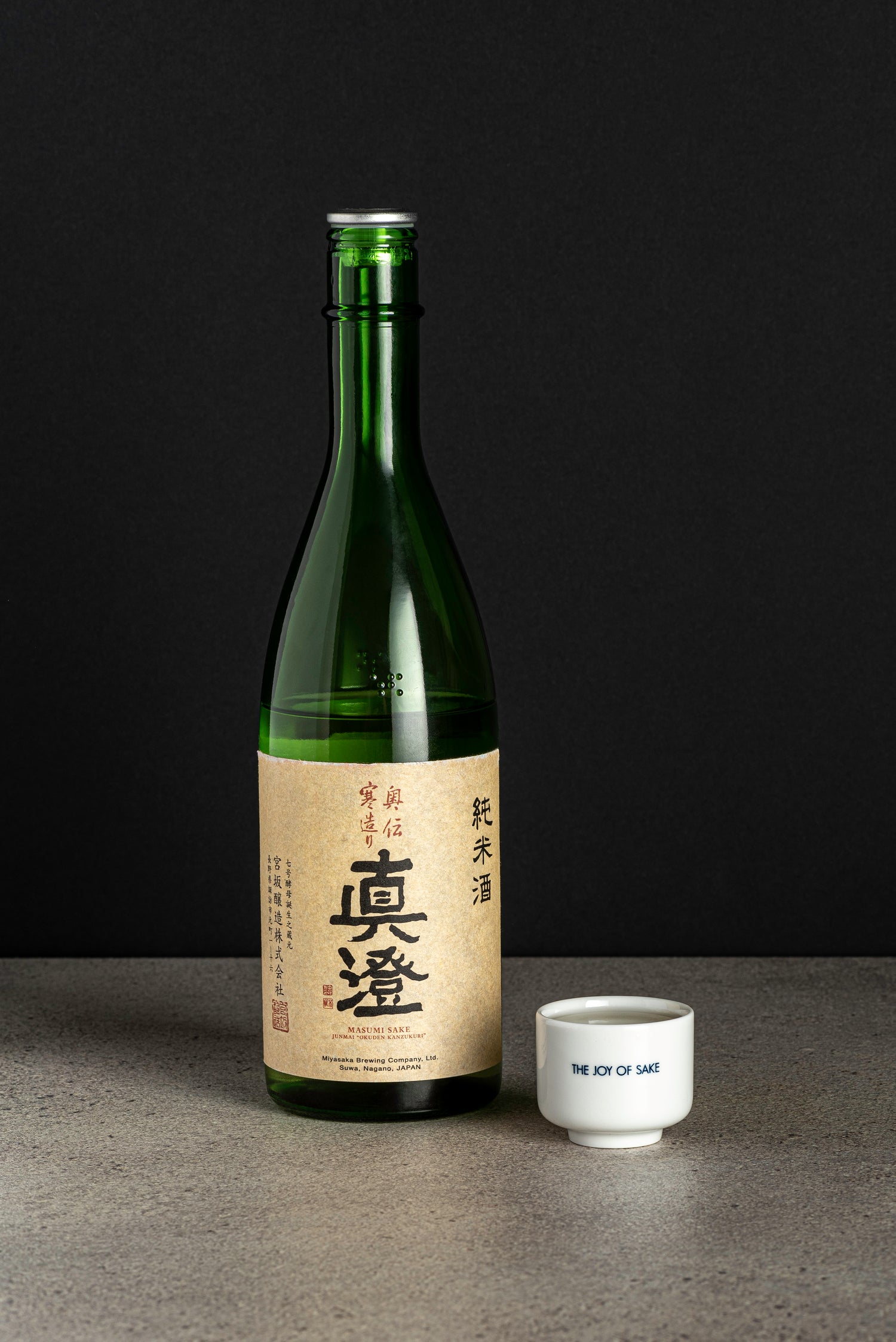
What is sake?
Sake is Japan's national drink, which is made from rice using a process called " multiple parallel fermentation ". It is therefore related to beer and wine, and not similar to spirits at all.
The average alcohol content of sake ranges from 12-18%, and its maximum possible alcohol content is 21.9%.
In Japanese, the name 酒 'sake' refers to any alcoholic drink, so if you are in Japan, you should try the drink by its regular name, 日本酒 'nihonshu', which in mirror translation means " Japanese alcohol ".
Ingredients

Rice
To make sake, you need japonica type rice, which has large starchy core inside, i.e. shinpaku.
This type of rice is non-sticky, low in protein and fat, and highly soluble.
The types of rice used may vary by region. The best known and most expensive variety is called yamadanishiki.
In order for sake to earn the designation 日本酒'nihonshu' , meaning 'Japanese sake' , it must be made from rice grown in Japan

Water
Japan's water resources are of unique high quality in the world. Due to the heavy rains that occur in the mountains, the water is endlessly filtered by the soil and is soft even in the big cities.
Spring water or snow melt is used to make sake, and the magnesium and iron content of the water is strictly controlled.
Soft water is key in all steps of sake making.

Koji
Koji is a harmless mold ( Aspergillus oryzae ), which converts the starch in the rice kernel into sugar with the help of an enzyme called amylase.
Rice grains themselves do not contain sugar, so this sugar must first be produced.

Yeast
Sake is fermented alcohol, and fermentation requires yeast. Yeast converts sugar into alcohol and carbon dioxide.
Sake yeast is a relative of brewer's yeast called Saccharomyces cerevisiae , and variants with different numbers and names are used to make sake.
The type of yeast plays an important role in achieving the final aroma profile of sake.
How is sake made?
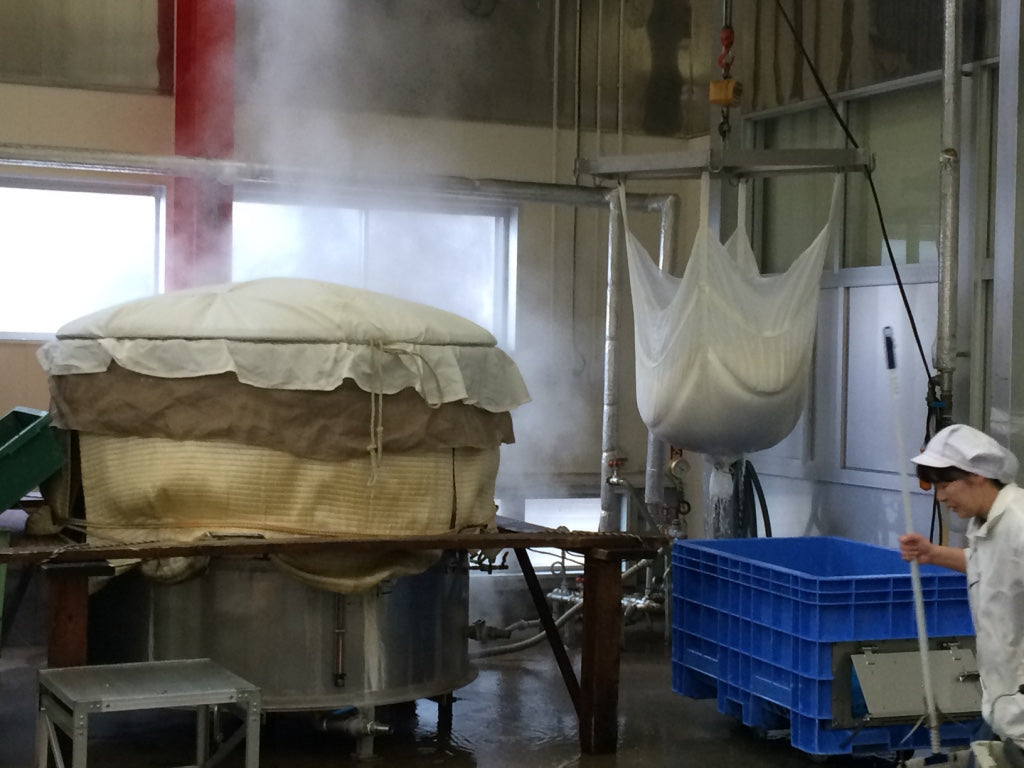
Polishing, washing, soaking and steaming the rice
Although it is very possible to make sake from brown rice, this outer shell contains fats and proteins that can have a negative effect on the taste of the final product. The rice grains are therefore polished to the desired size in grinding machines, thereby getting closer to the starch-containing kernel.
The fine dust remaining after sanding is then removed by washing, followed by soaking for a few seconds or even overnight.
The prepared rice is then steamed, turning the starch inside into digestible and fermentable alpha-starch. After steaming, the outside of the rice grains is firm and springy, and the inside becomes soft.
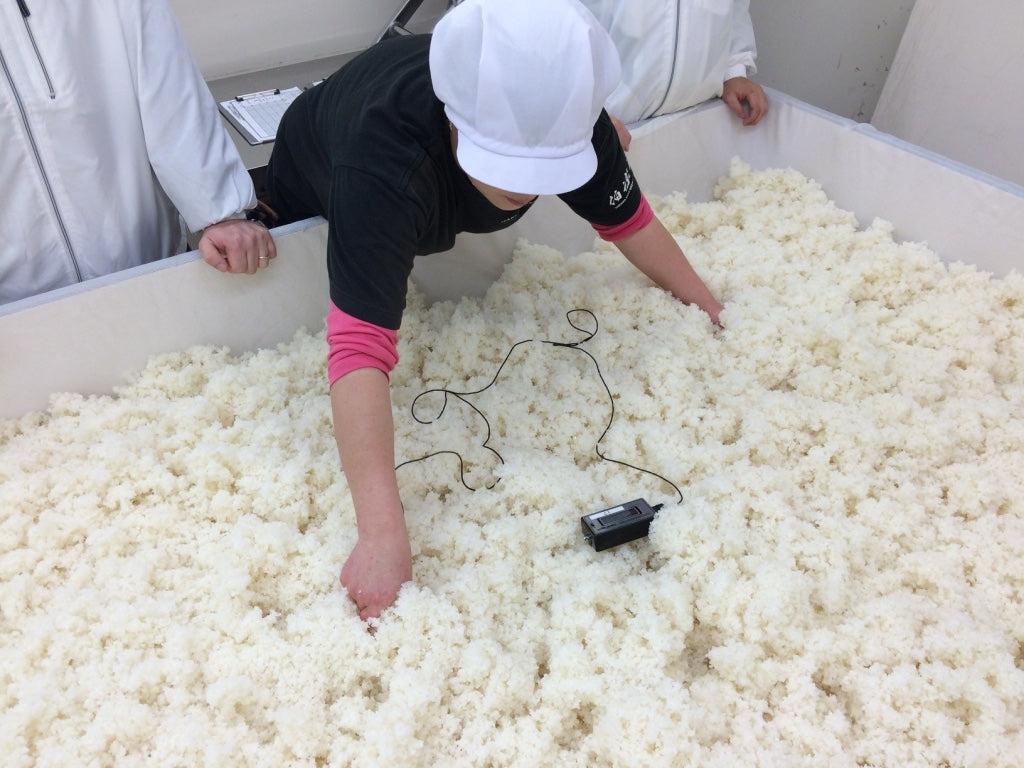
Koji making
20-30% of the steamed rice is transported to a warm room covered with cedar wood, with humidity above 60%, where it is spread on a table and evenly dusted with a mold called koji-kin .
Koji-kin converts rice starch into sugar with the help of an enzyme called amylase, also found in saliva, while raising the temperature of the rice kernel and slowly drying it out. During the process, the core temperature is strictly monitored at approximately 2-hour intervals, and the rice is mixed regularly.
The next day, the inoculated rice is placed on small trays and combed so that the moisture leaves the grains evenly.
The finished koji gives off a chestnut-like, sweet smell.
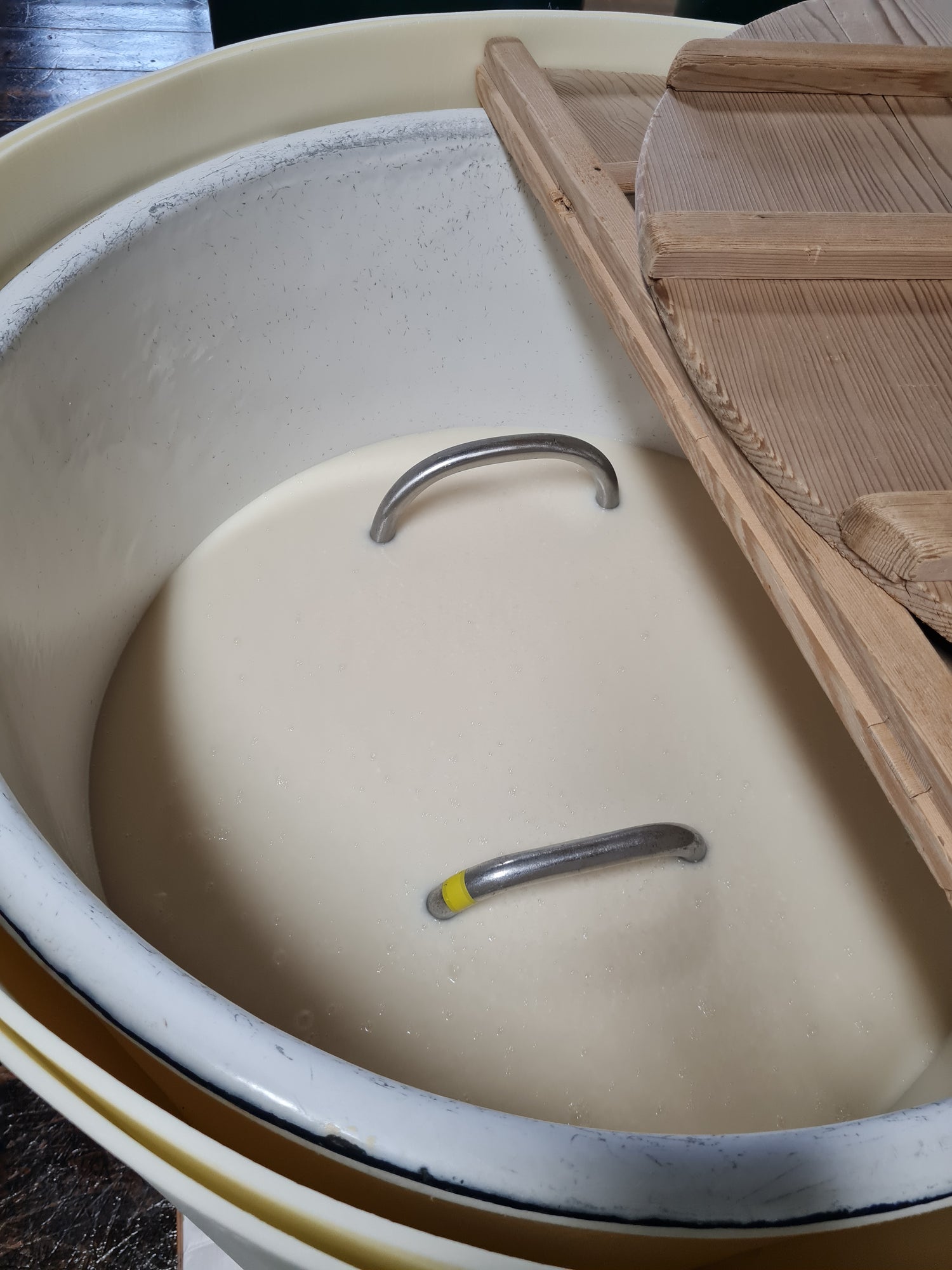
Yeast culture
Cultivating the yeast culture, i.e. shubo, is a very important step before sake fermentation.
The purpose of the pre-fermentation, which lasts an average of two weeks (one month according to certain old traditions), is to create a yeast culture with a sufficient number of cells, which can ferment thousands of liters of sake.
A smaller tank is filled with yeast, lactic acid, koji and water. The lactic acid medium helps the yeast to grow and at the same time protects it from potentially harmful bacteria and microorganisms. Steamed rice is added to the mix later.
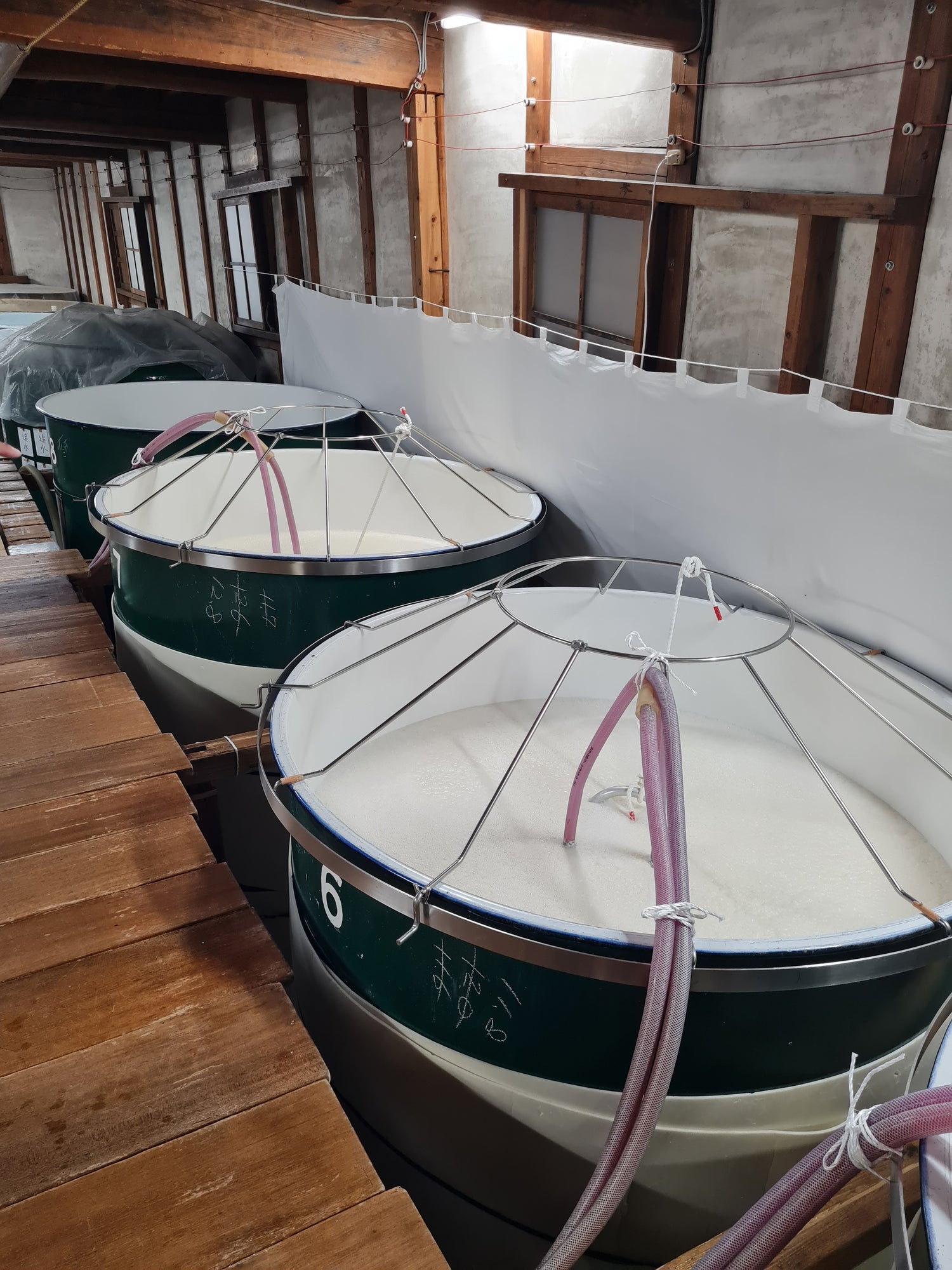
Main fermentation (Moromi)
During fermentation, the yeast converts the resulting sugar into alcohol and carbon dioxide. On the other hand, sugar formation does not stop even in this phase, but runs parallel to the fermentation into alcohol, so sake fermentation is called multiple parallel fermentation .
In this main phase of fermentation, a large tank is filled in three parts. The ingredients are added slowly so that the fermentation starts gradually.
The temperature and length of fermentation are subject to strict regulation, depend on the category of sake, and affect its aromas and body.
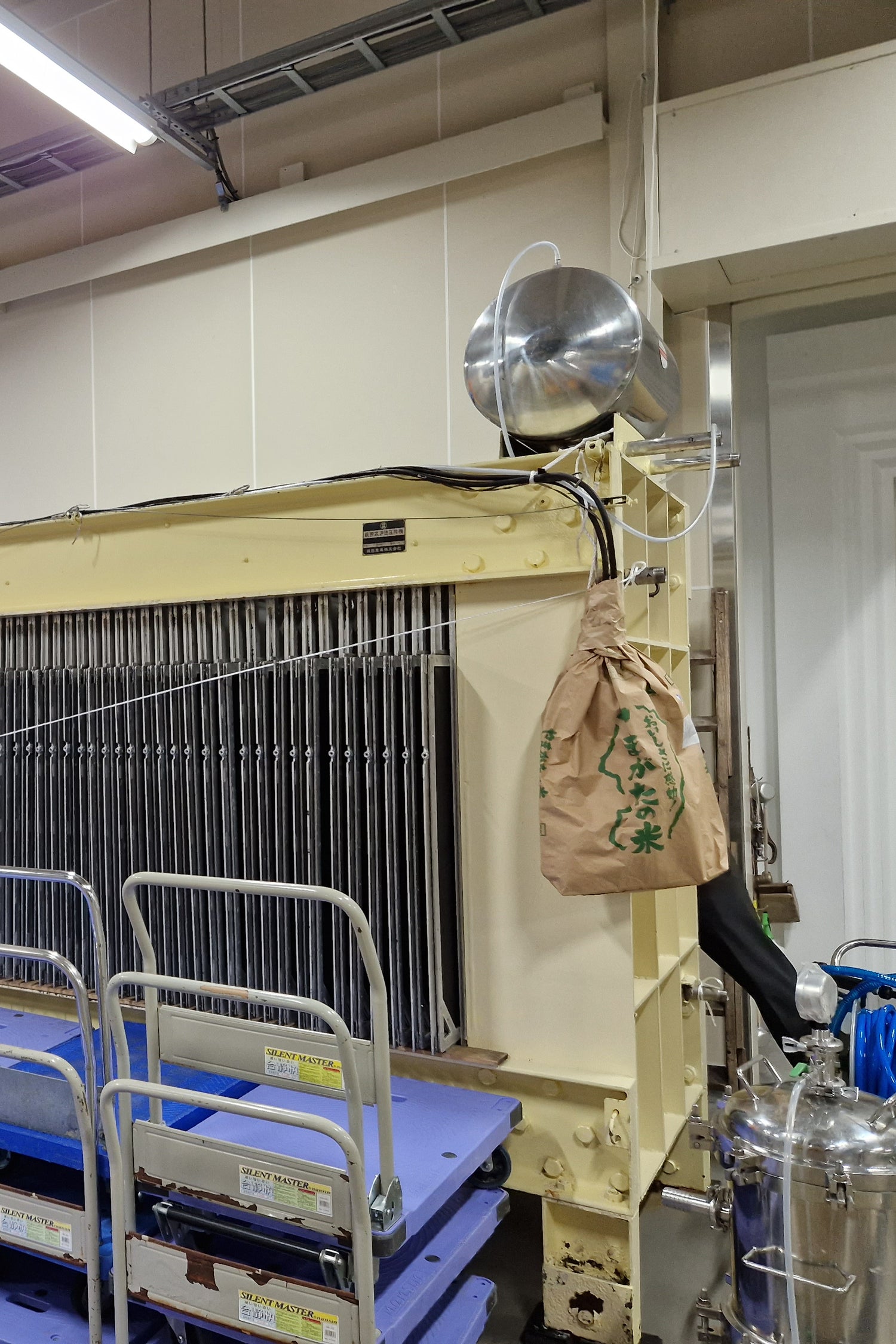
Pressing (Shibori)
Pressing is actually filtering, which serves the purpose of turning the still thick and white mass, which is the raw sake, into a clear liquid. The rice pulp remaining during fermentation can be separated from the liquid using different pressing methods. This step, i.e. the very first filtration, cannot be skipped.
There are several possible ways of pressing: using accordion-like presses (Yabuta), placing the raw sake in bags and applying vertical pressure (fune), or hanging the bags and extracting the liquid using a drip process (shizuku).
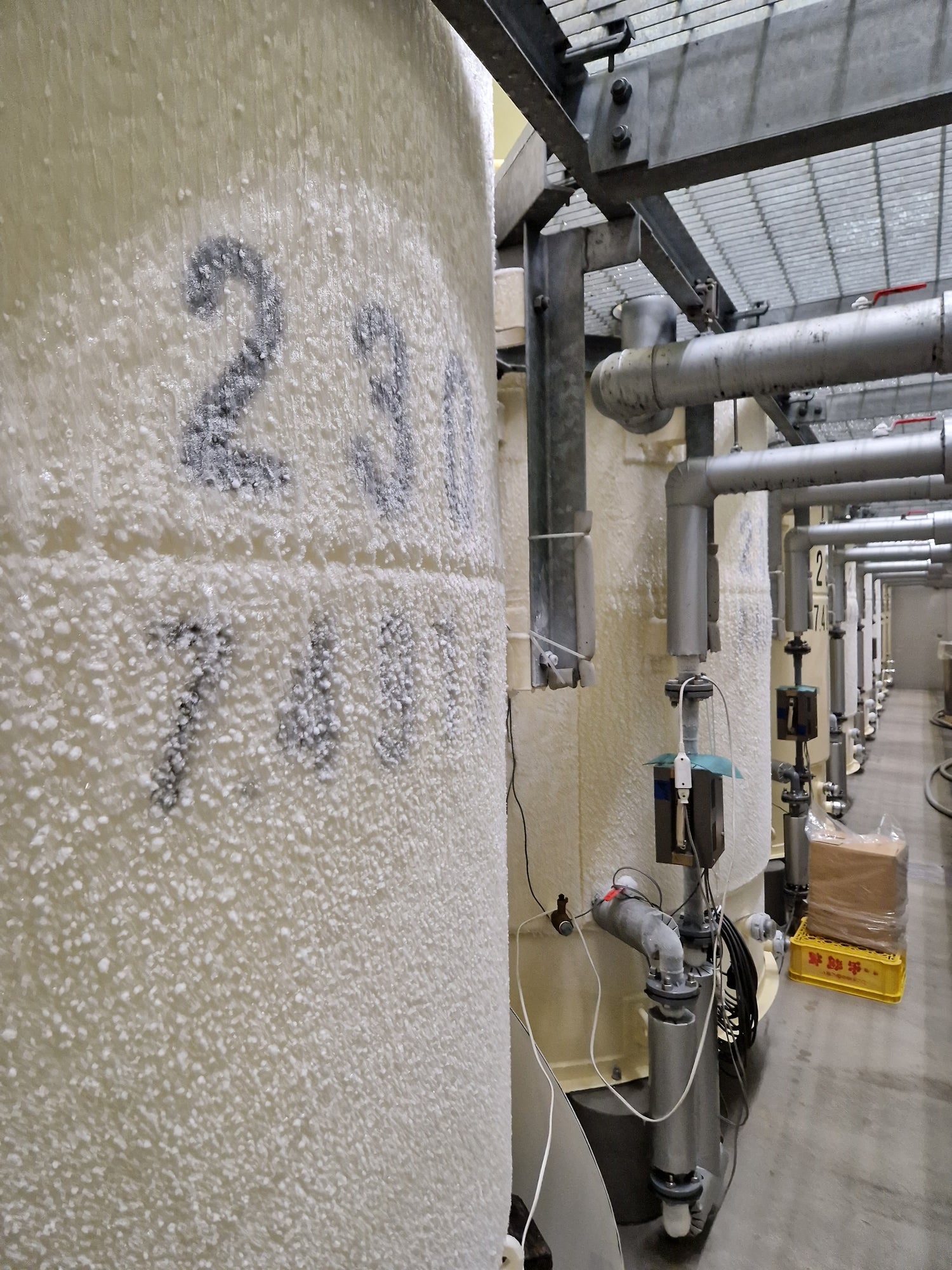
Post-brewing process
Sake can be subjected to several post-treatment steps after pressing. Omitting certain steps results in different styles of sake.
Filtering: Filtering the sake with a microfilter or activated carbon is optional. Its use results in a cleaner, more colorless liquid.
Pasteurization: The only possible preservation method for sake. It can be done in two steps, and in most sakes both steps are done. During pasteurization, the sake is heated to 60-65 degrees Celsius, which stops the formation of enzymes and destroys unwanted bacteria, and then it is suddenly cooled down again. Pasteurization can take place first in a tank and then once after bottling. Unpasteurized sake is often sweeter and much more aromatic than pasteurized products, but it is also much more fragile.
Aging: The average aging time for sake is about 6 months, and although the consensus is that it is best consumed young, sake breweries often experiment with longer maturation processes.
Dilution: Although sake yeast can produce relatively high alcohol levels, the law stipulates that the category of sake ends at 21.9% alcohol content. The average alcohol content for consumption is around 15-16%, which is achieved by diluting it with water.
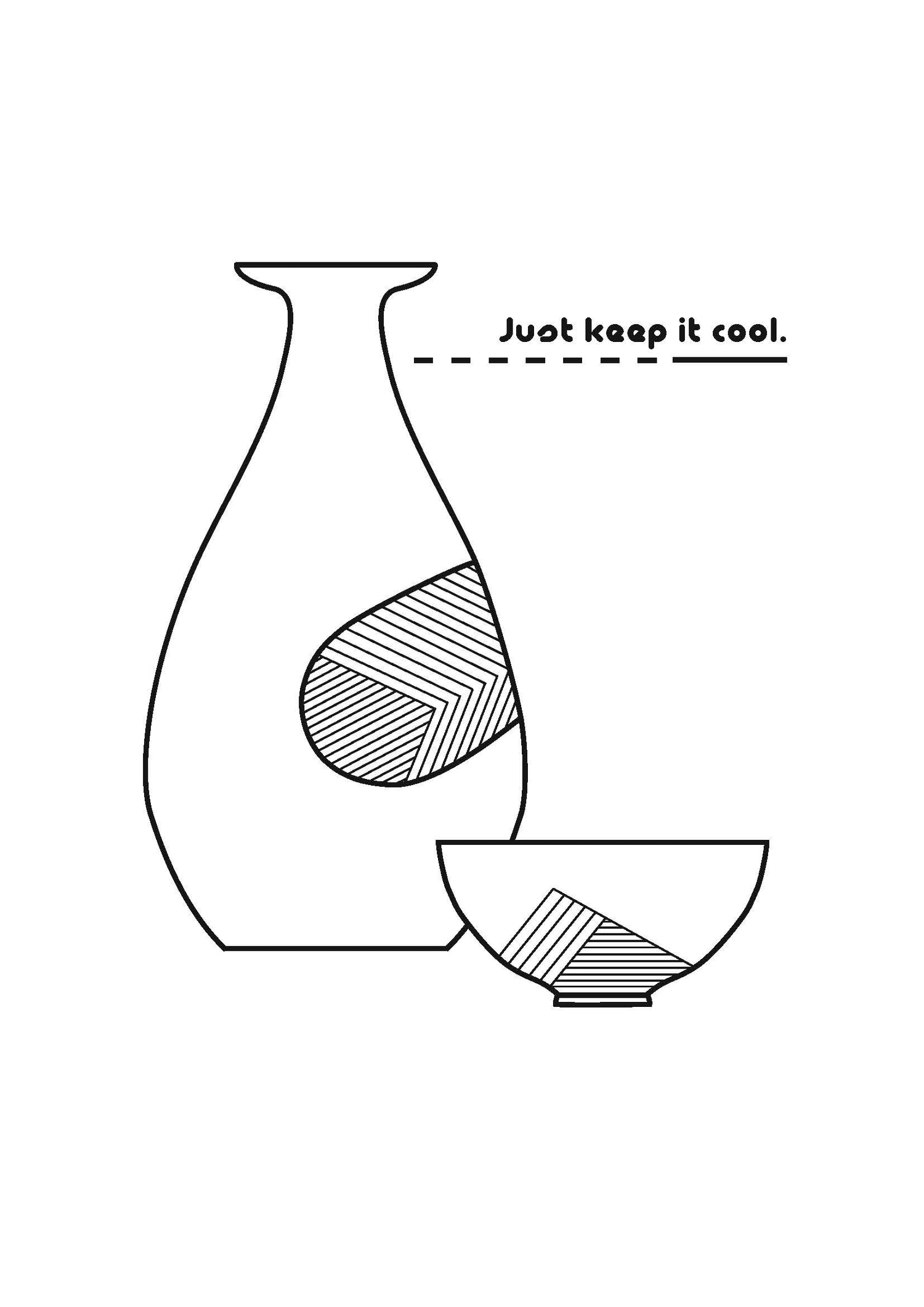
Storage
With few exceptions, premium sake must be stored refrigerated even before opening, as it is very sensitive to light and heat. Table-quality sake can often be found on the shelves of shopping centers, but high-quality sake should only be taken from the refrigerator if you want to enjoy it as its creators intended.
An average bottle of sake can last for 1-3 weeks in the fridge after opening, depending on the type.

